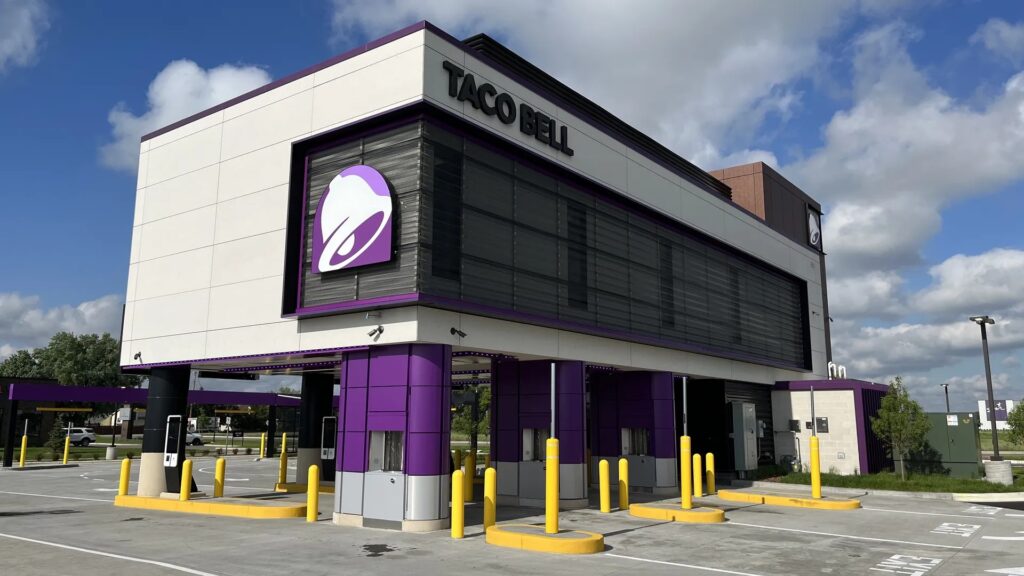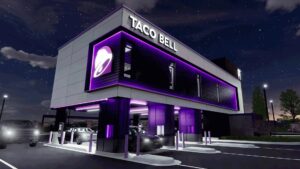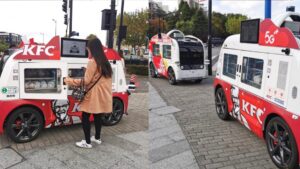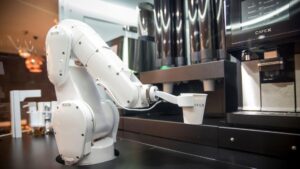
(CLAIR | Simi Valley, CA) – Depending on what you consider fast food, Simi Valley is home to at least 30 such establishments. These include popular chains like In-N-Out Burger, Del Taco, Jack in the Box, and Wendy’s. Additionally, there are other favorites such as PokiTomik, The Hat, and Firehouse Subs. However, the landscape of fast food dining is undergoing a significant transformation, influenced by a shift towards digital ordering and automation.





A growing number of fast food chains are experimenting with seatless locations, focusing solely on takeout or drive-thru options. The traditional image of a bustling McDonald’s PlayPlace is becoming a relic of the past. McDonald’s launched these PlayPlaces in the 1970s to foster brand loyalty among children by promoting a family-friendly environment. Today, these spaces are rare, not just due to health concerns over bacterial contamination but also because consumer habits have changed dramatically.
By the end of 2021, dine-in visits to fast food chains had plummeted to 14% of restaurant traffic, compared to 28% before the pandemic, according to NPD Group. The preference has shifted towards consuming fast food at home, in the office, or on the go. This change in behavior is prompting fast food giants like McDonald’s, Sweetgreen, and Chipotle to invest in “digital kitchens.” These compact, automated stores allow diners to order through mobile apps or digital kiosks, facilitating quick pick-up or delivery.
The move towards digital kitchens and the reduction of dining spaces are not just about adapting to consumer preferences but also about economic efficiency. Smaller stores mean reduced real estate costs, especially in urban areas where property prices are high. This shift is evident in McDonald’s new dining room-less restaurant concept in Fort Worth, Texas, designed around digital orders and efficient pick-ups.
Other chains are following suit. Sweetgreen opened its first digital-order-only, pick-up-only location in Washington, DC, in late 2022 and plans to open two fully automated restaurants in 2023. Panera Bread is also opening smaller stores with less seating in urban areas and more to-go-only locations, reflecting the growing importance of digital sales, which now account for half of its total system sales.
This digital transformation is also affecting labor dynamics in the fast food industry. In April, McDonald’s announced hundreds of layoffs in its corporate offices as part of a strategy to open new locations while investing more in digital, delivery, and drive-thru services. Automation and digital ordering systems are reducing the need for human workers, a trend further driven by persistent labor shortages despite wage increases.
In 2022, 85% of fast food orders were to-go, with roughly three-quarters of these being drive-thru orders, according to NPD data. The demand for drive-thru services is so high that even full-service restaurants are adding them. For instance, Taco Bell’s new concept restaurant features four drive-thru lanes, with food delivered directly to customers’ cars via a vertical lift.
Consumers now expect fast food orders to be ready quickly. According to a 2020 Deloitte report, 42% of diners expect their orders within five minutes or less. Fast food chains are leveraging technology to meet these expectations, using voice bots to improve order accuracy, apps, and kiosks for easy ordering, and location data to streamline pick-ups.
The changes in fast food are not driven by industry struggles but by a renaissance of convenience. McDonald’s reported a 10% sales growth and a $6.1 billion profit in 2022, highlighting that cost is no longer a significant deterrent for consumers. The emphasis is on convenience, with digital ordering becoming critically important.
Despite the technological advances and efficiencies gained, there is a cultural loss with the reduction of dining spaces. Fast food restaurants have traditionally served as community “third places” where people gather outside of work and home. As these spaces shrink, their role as communal gathering spots diminishes, reshaping the social fabric of many communities.
Simi Valley’s fast food landscape, like much of the country, is rapidly evolving. As digital kitchens and automated systems become more prevalent, the traditional fast food experience is being redefined. While this shift offers increased convenience and efficiency, it also signals the end of an era where fast food restaurants served as vital community hubs. The future of fast food in Simi Valley is one of innovation and change, reflecting broader trends in the industry towards a more digital and automated dining experience.




















